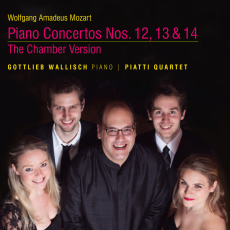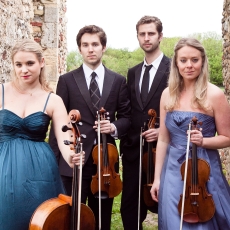Gottlieb Wallisch - Piatti Quartet - Mozart: Piano Concertos 12, 13 & 14 - Gramophone
To maximise sales, Mozart published these concertos both with orchestra and a quattro – ie, with string quartet. In the composer's day, domestic chamber performances vastly outnumbered public orchestral ones. Yet the quartet versions remain makeshifts. The ceremonial-military first movement of K415, with its trumpets and drums and ringing, neo-Handelian counterpoint, suffers most in the reduction. Even in the more lightly scored K414 and K449, you miss the countless subtle glosses provided by the oboes and horns.
In his own engaging if awkwardly translated note, Gottlieb Wallisch suggests that the chamber scoring ‘enhances the intricacies ofthe string-writing and encourages immediate reaction among the five musicians'. I see what he means, up to a point, in K449, whose string textures approach the richness and contrapuntalingenuity of Mozart's ‘Haydn' Quartets. This is, I think, the most successful performance of the three. Wallisch is a robust, rather plain-speaking Mozartian, more concerned with the long view than poetic detail. Truly soft playing is at a premium, an impression enhanced by the close recording. The first movement, taken steadily, is sturdy rather than mercurial. But he and the alert Piatti Quartet are responsive to the Andantino's troubled chromaticism, and lucid and sinewy, in the polyphonic miracles of the finale.
There are good things in the two earlier concertos: say, the care for a broad, singing line in the solemn Andante of K414, and Wallisch's clarity and vigour in K415's contrapuntal sallies (including a sneak preview of Beethoven's Die Weibe des Hauses Overture). Wallisch's no-nonsense directness has its virtues.


